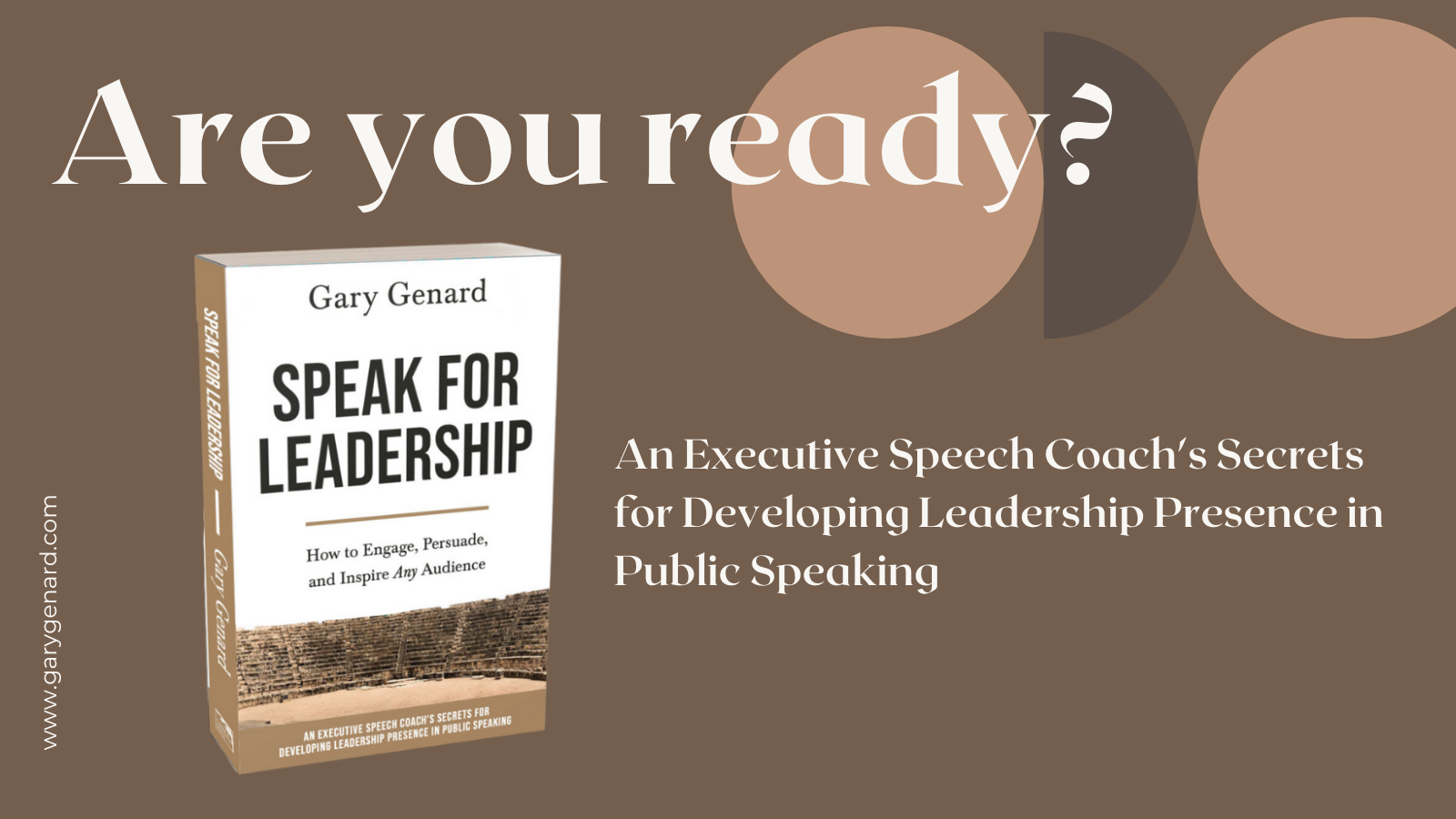
Let's talk about a three-part formula that will help your speaking reach new heights in 2024. You can call it a triad, trifecta, or trilogy—all words that testify to the "power of three" in music, rhetoric, and life. That's because nothing quite weaves a level of tightness and reinforcement, and even elegance, into any structure or practice like a threesome, troika, or trinity (there's three more words for you).
What I'm talking about here is the connection between breath, words, and voice (as physical expression). When understood and used together, they not only make what you say more elegant and powerful. They have the unique ability to connect you emotionally with both your material and your audience. And they work at a functional level far deeper than the advice you'll hear about knowing your audience, making eye contact, showing empathy, and so on.
Want to speak at that level in 2024? Discover how to inspire audiences emotionally with my book, Speak for Leadership: An Executive Speech Coach's Secrets. On Amazon.
The Connection of Breath and Language
First, let’s consider how the breath, as part of the physical expression of what you’re saying aids you as a communicator. The breath, in fact, “takes the words down to a physical level, deeper than the intellect . . . [where] passion is allowed to come through the language, with its enormous variety of sounds.”1
How vital is your voice in business? Learn how to project power and presence! Download my Free Tips and Tricks Guide, The Voice of Authority: How to Sound Like a Leader.
Breath, then, is connected not just to vocalization but also to language itself. One of the things acting teaches you—especially if it’s in Shakespeare’s plays—is to trust in the language. We can apply that concept directly to public speaking as well, and say this:
If you trust in what you’re saying, all you have to do is say it.
In a sense, when you add a layer of, "I must say this sincerely," you're just aiming for an effect. It's exactly like the actor's portrayal of a character. He or she will never succeed if they "try" to show anything. If they believe they are the character living this moment, well, yes: however they respond will be organic and unforced, that is, real. If you breathe in an unforced way and invest yourself in your words, they will land on the audience's ear with the pure meaning they were always meant to have. "Remember your lines and don't bump into the furniture" has always been good advice for any stage!
Learn how to use ALL the tools of effective speaking for business! Get the expanded edition of the Public Speaking Handbook, How to Give a Speech. Find it here on Amazon
You don’t have to be a monumental performer who bestrides the world like a Colossus (yep, that’s Shakespeare too). You do have to breathe: fully and from the diaphragm, because that’s the source of the power that gives your words life.
If you breathe shallowly, you need to lower the breath in your body. Remember, that’s where your power comes from—not from the chest area, and certainly not from your throat. Breathe with your diaphragm and you’ll be in touch with the core process that produces vocal sound. As I said earlier, speech begins with the breath! Get in touch with your breathing as you speak and you’ll begin to own the words you’re uttering.
Breathing properly is also essential to overcoming speech anxiety! Learn more in "How Breathing Can Help Control Your Fear of Speaking," and my book, Fearless Speaking.
The Physical Part: Achieving a Balanced Voice
The Importance of Avoiding a “Head Voice.” The cerebral or “head voice” that so many people use, on the other hand, results from much shallower breathing. A voice like that reveals not only an over-emphasis on thinking (rather than feeling and sharing emotion), but also a neglect of the body's role in performance. When this is the speaking style, that person literally has to learn how to sink the voice so it resonates in the rest of the body not just the head.
When you link your breathing to how you express yourself physically, you’re tapping into a strong emotional response. You are also discovering how to convey emotions powerfully to others. Often, it is at that point that you begin to understand your own feelings! That is why breathing exercises in acting classes and play rehearsals can bring people to tears. Link your breath to what you're saying and your vocal expression, and the emotional life of your content AND your performance will flow freely.
1 Cicely Berry, The Actor and the Text (New York: Applause, 1992), 27-28.
This article is excerpted from my book, Speak for Leadership: An Executive Speech Coach's Secrets for Leadership Presence. Get a signed copy here. Or at Amazon.
You should follow me on Twitter here.

Gary Genard is an actor, author, and expert in public speaking and overcoming speaking fear. His company, The Genard Method offers live 1:1 Zoom executive coaching and corporate group training worldwide. He was named for nine consecutive years as One of the World’s Top 30 Communication Professionals, and also named as One of America's Top 5 Speech Coaches. He is the author of the Amazon Best-Seller How to Give a Speech. His second book, Fearless Speaking, was named in 2019 as "One of the 100 Best Confidence Books of All Time." His handbook for presenting in videoconferences, Speaking Virtually offers strategies and tools for developing virtual presence in online meetings. His latest book is Speak for Leadership: An Executive Speech Coach's Secrets for Developing Leadership Presence. Contact Gary here.
Main photo credit: Tsukiko-Kiyomidzu on pixabay.com




